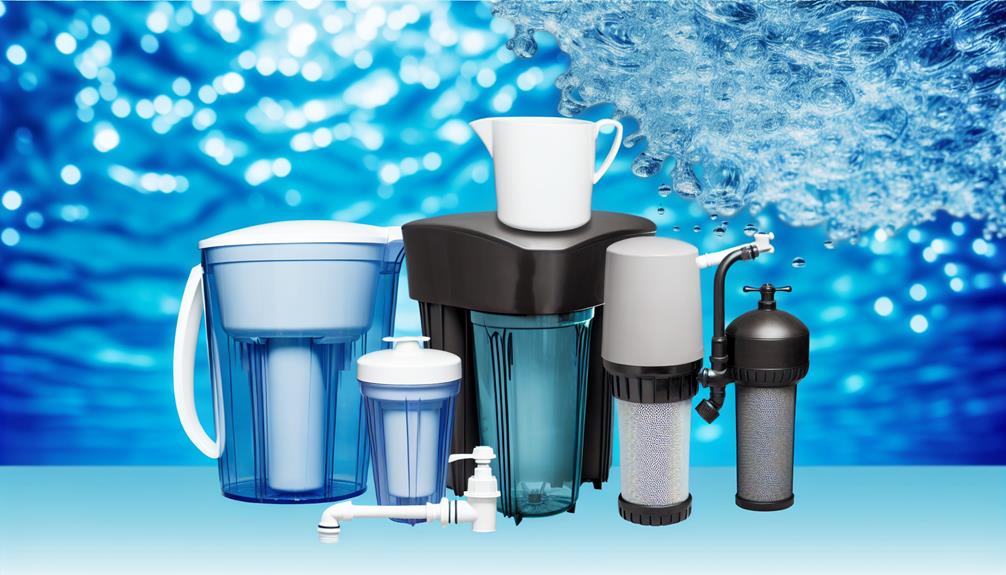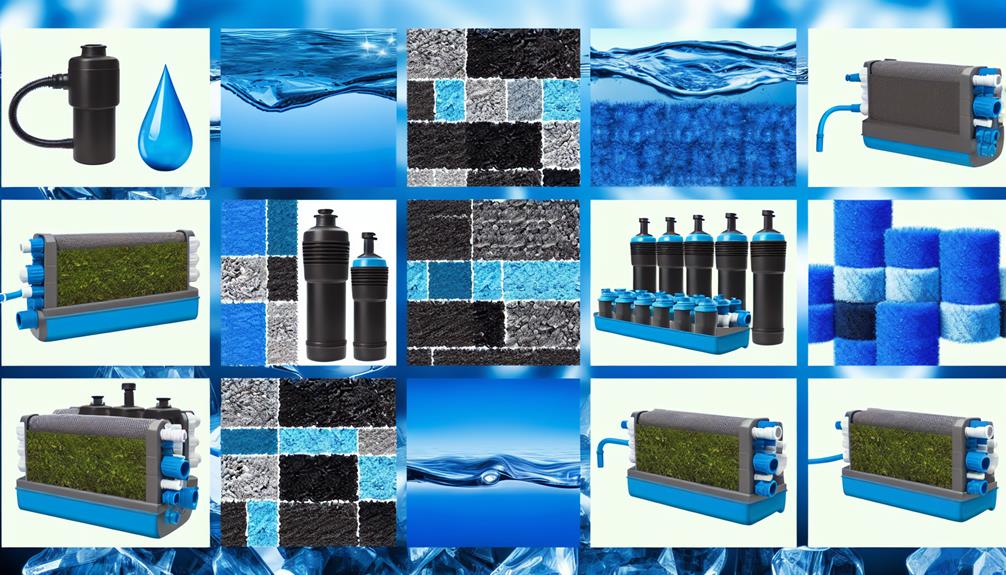Imagine you've just moved into a charming older home, only to discover that the tap water contains high levels of lead, a hazardous contaminant. You're now faced with the critical task of finding a water filter that can effectively remove lead to ensure your family's safety. The market is flooded with options, each boasting state-of-the-art technology and promising purity. However, discerning which filters truly perform best is not always straightforward.
You'll need to weigh factors such as filtration methods, certifications, and maintenance requirements. As you look into the various systems available—from pitcher filters and faucet attachments to under-sink and whole-house solutions—the question remains: which of these options will meet your specific needs and keep the water flowing cleanly in your home?
Stay tuned as we explore the science behind the top contenders and help you navigate the choices to find a reliable solution for your lead contamination concerns.
Lead Exposure and Health Risks
Lead exposure poses significant health risks, including neurological damage and kidney impairment, particularly threatening to pregnant women, unborn children, and young kids. The Environmental Protection Agency (EPA) identifies lead in water as a significant contributor to lead poisoning, a critical health crisis affecting various populations.
Exposure to lead can lead to severe brain disorders, damaging both the central and peripheral nervous systems. For pregnant women, the stakes are even higher as lead can cross the placental barrier, endangering the developing fetus with potential long-term consequences.
In young children, lead exposure is linked to delayed mental and physical development, reduced IQ, and the emergence of attention disorders and behavioral problems. These effects stem from lead's ability to disrupt synaptic processes and alter brain chemistry, underscoring the importance of early detection and lead removal strategies. Adults aren't immune; they can suffer from cognitive deficits and kidney damage due to lead's toxic properties.
Therefore, reducing lead exposure is imperative. Identifying the intensity and sources of lead contamination is the first analytical step towards mitigating these health risks. This technical evaluation guides the application of targeted lead removal approaches, aiming to safeguard the health of the most vulnerable—pregnant women and young children.
Understanding Lead Filtration Technology
Given the critical health impacts of lead detailed earlier, it's essential to explore the technologies designed to filter this contaminant from drinking water. You'll find that lead filtration technology has evolved to offer several effective solutions. Here are some key methods to remove lead:
- Reverse Osmosis (RO): This system forces water through a semi-permeable membrane, removing up to 95% of lead. RO systems often meet NSF Standard 58 for lead reduction.
- Activated Carbon Filters: These use a carbon block or activated carbon filter cartridge to adsorb impurities, including lead. However, their efficacy can diminish over time, necessitating regular replacement.
- Ion Exchange Resins: These resins exchange ions in the water with non-toxic ions, effectively reducing lead content.
- Distillation: A more niche method, distillation heats water to create steam, which is then condensed back into liquid, leaving lead behind. It's quite effective but less practical for everyday use.
Each of these filters that remove lead from drinking water has its pros and cons. Reverse Osmosis is reliable and cost-effective, while activated carbon offers simplicity but requires maintenance. Ion exchange resins are specialized, and while distillation provides exceptionally pure water, it's less suited for high-volume use.
Always ensure that any water filters for lead you consider are certified to NSF standards for lead removal.
Top 5 Reverse Osmosis Filters
When selecting a reverse osmosis filter for lead removal, it's crucial to consider models that not only boast high efficiency rates but also come with NSF Standard 53 certification to ensure safety and performance. Reverse osmosis (RO) systems are renowned for their ability to reduce high levels of lead in drinking water, with top-tier filters achieving lead reduction rates of 94% to 97%.
However, for complete reverse osmosis lead removal, integrating additional activated carbon and ion exchange filters is advisable. This layered approach enhances the RO system's capacity to tackle various contaminants. Undercounter RO purifiers excel at this, removing up to 99.9% of lead, and their installation process is relatively straightforward, making them a practical choice for home use.
When considering whole-house filtration, RO systems are particularly effective for extensive lead reduction, especially in areas with well water known to contain lead. These systems ensure that all water entering your home is treated, providing comprehensive protection.
Remember to verify that the RO system you're considering is NSF Standard 53 certified, as this indicates its effectiveness against lead and other harmful contaminants. By selecting a certified filter, you're ensuring that the water you and your family consume isn't only refreshing but also safe from lead exposure.
Best Carbon Block Filter Pitchers
For those seeking a practical and cost-effective solution to lead contamination in drinking water, the best carbon block filter pitchers offer a blend of portability and efficiency through the use of activated carbon and ion exchange resin. These pitchers aren't only user-friendly but also serve as a reliable lead filter for your daily needs.
Consider these critical aspects of carbon block filter pitchers:
- Efficiency in Removal of Lead: High-quality pitchers incorporate micron Carbon that's finely calibrated to trap and reduce lead particles, ensuring your Filtered Water meets safety standards.
- Certification Standards: Aim for pitchers certified by authoritative bodies like the Water Quality Association (WQA), confirming that filters can remove specified levels of lead.
- Maintenance and Longevity: Evaluate the lifespan of each lead filter cartridge and the ease with which it can be replaced to maintain consistent removal of lead.
- Flow Rate and Capacity: Analyze the flow rate for filtration and the volume of Carbon Water that can be processed before needing a refill.
Effective Whole House Filtration Systems
While carbon block filter pitchers are suitable for individual use, whole house filtration systems provide a more extensive solution for eliminating lead from all water sources in your home. These comprehensive units, known as Whole House Water Filtration Systems, are installed directly onto the main water line, ensuring that every tap in your house dispenses water that has undergone thorough Water Treatment.
House water filters employing advanced filtration methods to remove lead are key to safeguarding your family's health, particularly if you reside in an older property with pre-1986 plumbing. By integrating a filter system that carbon absorbs heavy metals with, you effectively reduce the risk of lead exposure. The water flow through these systems is designed to tackle high usage without sacrificing water pressure.
Among the most robust solutions are Reverse Osmosis systems, which are capable of removing a wide array of contaminants, including lead. These systems aren't only adept at filtering out impurities, but they also ensure that the water for drinking, cooking, and bathing is consistently clean.
Opting for a whole house water filter system means committing to a long-term, reliable approach to water safety. It's an investment in a scalable Water Treatment infrastructure that will serve your household's needs efficiently and effectively.

